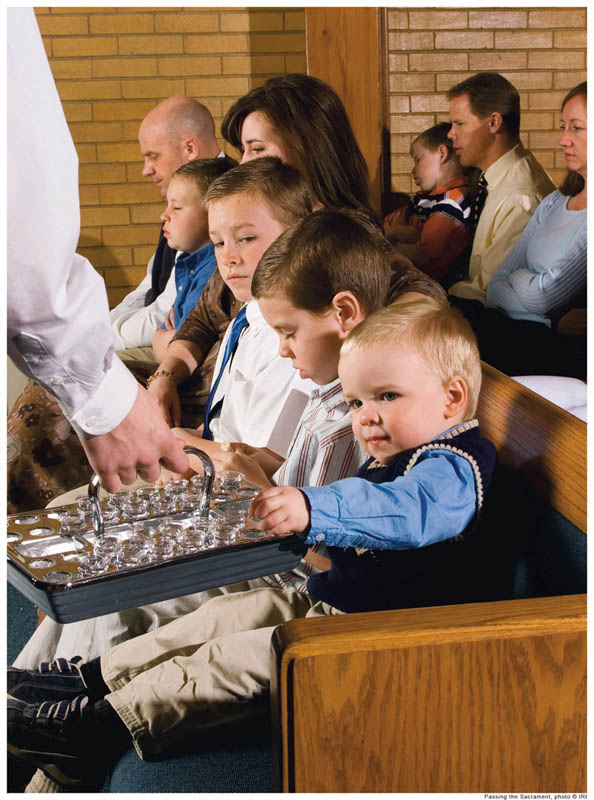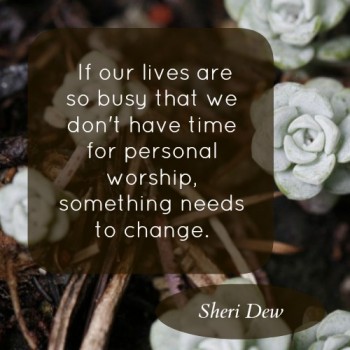Mormons believe the gospel should be something we practice all day, every day, not just during the worship service. Because of that, our worship takes a variety of forms, both in church and at home. One important aspect of learning about Mormons is learning about Mormon worship.
 In this article we’re talking about Mormon worship in church. Every Sunday, Mormons gather for three hours at their chapel. You may have heard about Mormons and their temples. However, these temples are not used for regular worship and are not even open on Sundays. On Sundays, Mormons head for a chapel, found in neighborhoods all over the world. These are open to the public and visitors are welcome.
In this article we’re talking about Mormon worship in church. Every Sunday, Mormons gather for three hours at their chapel. You may have heard about Mormons and their temples. However, these temples are not used for regular worship and are not even open on Sundays. On Sundays, Mormons head for a chapel, found in neighborhoods all over the world. These are open to the public and visitors are welcome.
If you decide to visit one day, you can ask a Mormon friend to take you or you can just show up. If you decide to come on your own, you’ll enter into a hallway or foyer from the parking lot. Just stop anyone you see and let them know it’s your first time in a Mormon church. They’ll be happy to help you through your day. If you see men or women wearing black name tags, they’re the best people to ask for help. They are missionaries and are trained to help you understand what you are seeing.
You’ll find most women and girls are wearing dresses or skirts that go to the knee or below and that are modest—nothing low-cut, sleeveless, backless, or too tight. The men and boys are usually wearing sports coats, although some, including most young boys, just wear dress slacks, white shirts, and ties. Of course, if you don’t have those things, just wear the nicest thing you do own and you’ll be fine. The goal is to show respect for God by wearing the nicest thing we have—not because He cares, but because we care enough to show respect.
There are three parts to our service, referred to as blocks. They aren’t always in the same order, but most congregations, called wards, start with the basic worship service. This meeting is called Sacrament Meeting. The main purpose of the meeting is to take the sacrament, or communion, although it is a regular service.
The first thing you’ll notice is that the chapels are quite plain. There are pictures of Jesus Christ in the foyers and hallways, but nothing in the chapels. You sometimes see flowers, but no other decorations to distract you from the service. You’ll also notice the babies and children are not sent to a nursery. There is a nursery for children eighteen months to age three during classes, but not during the service. Mormons believe families should worship together. This means the meetings are sometimes a bit noisy, but Mormons like children so they don’t mind.
Mormons have a lay clergy, which means all work is done by volunteers. There is no paid minister. Instead, each ward has a bishop, similar to a lay pastor. He has a family and a regular, secular job and does his church work in his “spare” time. Everyone at church has a volunteer position to help spread out the work and to help us have a connection and role to play in the Savior’s work. The bishop is assisted by two counselors. One of these three men will lead the meeting, but the sermons, called talks, are given by members of the congregation. In most meetings, two adults and a teenager or two will be invited to speak on a gospel subject in advance. The first Sunday of the month is Testimony Meeting. That week, anyone may go to the microphone to share a brief testimony of the Savior. It is not a time for debate or argument. It is a spiritual experience for the members and they come fasting—no food or drink for twenty-four hours—in preparation. The money they save by not eating or drinking is donated to the poor.
Mormon meetings begin with announcements, a hymn, a prayer, and church business, which can include announcing new people for various volunteer positions or blessing babies. Then the Sacrament (communion) is passed. The sacrament consists of bread and water (the water replacing the traditional wine) and it is blessed—prayed over—by teenage boys who are sixteen or older and hold the priesthood. (Mormon boys can receive the first level of priesthood at age twelve.) It was previously set up by boys ages 14 or older. Then it is passed to members of the congregation by boys who are at least twelve. Although it is meant for members, if someone offers it to you and you’d like to take it, you may. It is offered in remembrance of the Savior, so the important thing is to take it with respect for Him. When the bread comes to you, take one piece from the tray the person next to you is holding. Use your right hand. Eat it and then take the tray and hold it for the person on the other side of you. If there is no one else, hand it to the priesthood holder waiting for it if you’re at his end of the aisle or let the person who handed it to you send it back if you’re against a wall. When the water comes, which is blessed after the bread has been passed, take the water from the person holding the tray. It’s in a disposable cup. Place the empty cup into the center area of the tray and again return the tray or hold it for the next person. If you don’t want to take the sacrament and you’re at the start of the aisle, take the tray without taking bread or water and hold it for the next person. If you’re the only person in your aisle or against the wall, just shake your head no and the boy will move on or the person beside you will return it.
No collection plate is passed. There is actually no way for a visitor to spend money during a Mormon church service. Those who are paying their tithing put it in a special envelope found near the bishop’s office and hand it quietly to either the bishop or his counselors when they happen to see him on Sunday.
The speakers are next, sometimes with a hymn between the adult speakers. The meeting closes with another hymn and a prayer. Next you’ll go to classes. Children under the age of eighteen months go with their parents. Ask anyone to show you where to go. Let them know you aren’t a member, because there is a Sunday School class just for visitors and new members. It lasts a year and covers the basic principles of Mormonism, to help newcomers learn the doctrine of the Church. This class is called Gospel Essentials. You can read the lesson manual used in the class free online.
Read the Gospel Principles Manual
Once new members or visitors finish the Gospel Essentials class, they attend a regular Gospel Doctrine Sunday School. In this class, they study the scriptures in a four year rotation, including two years of Bible study.
Following this class, men and women separate. The women go to Relief Society, where they study the gospel from a decidedly female perspective. The men attend Priesthood Meeting. If you don’t have the priesthood, you are still welcome to attend. Just ask a man to show you where to go. They study essentially the same lessons as the women, but focused on the God’s plans for men and how to honor the priesthood roles. In these classes you’ll learn how to apply the scriptures, find out what Mormon prophets teach, learn how to improve your home life and how to live a better Christian lifestyle.
Teenagers attend their own classes, divided by age. Children attend Primary. Missionaries or other members can help you get all of them to the right classes.
Throughout the three hour block, Mormons are learning about Jesus Christ and how to apply His gospel to every aspect of their lives. Being a Christian isn’t about a few hours on Sunday. It’s an eternal lifestyle and no part of our lives is exempt from the commandments. That is what makes this part of Mormon worship so critical.
About Terrie Lynn Bittner
The late Terrie Lynn Bittner—beloved wife, mother, grandmother, and friend—was the author of two homeschooling books and numerous articles, including several that appeared in Latter-day Saint magazines. She became a member of the Church at the age of 17 and began sharing her faith online in 1992.



